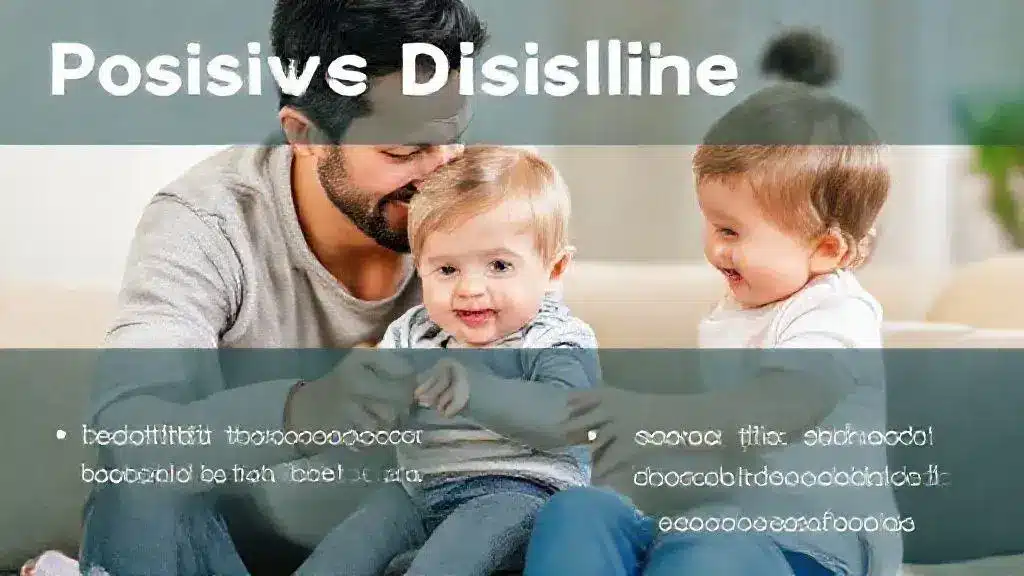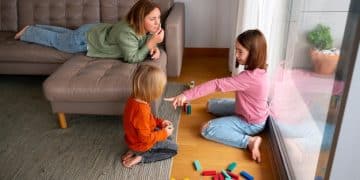Positive discipline techniques for toddlers that really work

Positive discipline techniques for toddlers involve guiding behavior through redirection, positive reinforcement, and setting clear boundaries, promoting emotional growth and strong parent-child connections.
Positive discipline techniques for toddlers can transform your parenting experience, creating a harmonious environment. Have you ever wondered how to encourage good behavior without harsh discipline? Let’s dive into methods that truly resonate with young children.
Understanding the principles of positive discipline
Understanding the principles of positive discipline is essential for fostering respect and cooperation among toddlers. This approach focuses on building a loving connection between you and your child while guiding their behavior in a supportive manner. When parents use positive discipline techniques, they encourage children to learn from their mistakes instead of simply punishing them.
Key Principles of Positive Discipline
Positive discipline isn’t just about setting limits; it’s about teaching children how to make better choices. Here are some key principles:
- Respect: Treat your child with respect, showing them that you value their feelings and opinions.
- Empathy: Understand things from your child’s perspective and respond with compassion.
- Consistency: Be consistent in your expectations and responses to behavior.
- Encouragement: Focus on encouraging positive behavior rather than just punishing negative behavior.
Additionally, it’s important to remember that children thrive in a structured environment. When clear rules and guidelines are established, toddlers can navigate their world better. You may find that when they understand expectations, they are less likely to test boundaries.
Building a Positive Environment
Creating a nurturing atmosphere is vital to implementing positive discipline. Here’s how you can build a positive environment:
- Use positive language that encourages good behavior.
- Develop routines that help children feel secure.
- Encourage problem-solving by allowing toddlers to express their emotions.
Always remember that mistakes are teaching moments. When a child misbehaves, ask questions that help them reflect on their actions. This approach not only guides them but also strengthens your relationship, making them more likely to listen and learn.
In summary, understanding the principles of positive discipline helps parents create a cooperative relationship with their toddlers. By respecting their emotions and maintaining a consistent approach, you can pave the way for a more harmonious parenting experience.
Effective communication strategies with toddlers

Effective communication strategies with toddlers are key to fostering understanding and cooperation. Engaging in meaningful conversations at this early age can set the foundation for lifelong communication skills. When you communicate effectively, you help your child feel understood and valued.
Listening Actively
One of the most important aspects of communicating with toddlers is active listening. This means paying full attention to what your child is saying. Show them that their thoughts are important by nodding and responding appropriately. This practice builds trust and encourages toddlers to express themselves more freely.
- Use affirmations: Phrases like “I see how you feel” can validate their emotions.
- Repeat back: Paraphrase what they said to show you are listening.
- Stay focused: Eliminate distractions when talking to your toddler, like putting away your phone.
Using simple language is another strategy that enhances understanding. Toddlers benefit from clear and concise words. When giving directions or explaining feelings, keep sentences short and straightforward. This helps them grasp what you mean without confusion.
Encouraging Expression
Encouraging toddlers to express their feelings is crucial. Allow them to use their words to describe what they’re experiencing. This not only promotes verbal skills but also allows parents to better understand their child’s emotional landscape. You can ask open-ended questions, which require more than a yes or no answer, encouraging them to think and share their emotions.
- Examples of open-ended questions: “What made you happy today?” or “How do you feel when you play with your friends?”
- Model expression: Share your own feelings to show them how to articulate their emotions.
- Use visuals: Picture cards can help toddlers communicate feelings they might struggle to express verbally.
Lastly, using non-verbal communication is incredibly powerful. Your tone of voice, facial expressions, and body language all convey messages. Smile when you greet them and use a warm tone to express understanding. Together, these strategies help build a strong communicative bond with your toddler, making interactions more fruitful.
Building a strong parent-child connection
Building a strong parent-child connection is fundamental to effective parenting. A positive relationship not only fosters trust but also encourages open communication. When children feel securely attached to their parents, they are more likely to cooperate and express themselves freely.
Quality Time Matters
Spending quality time together is essential in strengthening this bond. Engaging in activities that both you and your child enjoy creates shared memories and experiences. This could be as simple as reading together or playing games. These moments help children feel valued and promote a sense of security.
- Daily rituals: Establishing routines like reading a bedtime story can enhance connection.
- Active participation: Involve your child in activities such as cooking or gardening to foster teamwork.
- Limit distractions: Put away devices when spending time together to focus on each other.
Another key element is showing affection. Regular hugs, kisses, and verbal praises can help your child feel loved and accepted. Expressing genuine love and care lays the groundwork for a healthy parent-child relationship.
Open Communication
Open communication is also vital in building a strong connection. Encourage your child to share their feelings and thoughts without fear of judgment. Employing open-ended questions allows them to express themselves better. For example, instead of asking if they had a good day, try asking what the best part of their day was.
- Practice patience: Give them time to articulate their thoughts.
- Validate feelings: Help them feel understood by acknowledging their emotions.
- Create a safe space: Ensure they know it’s okay to talk about anything without consequences.
Additionally, sharing experiences together can deepen your bond. Whether it’s embarking on family outings or tackling challenges together, these shared moments build a partnership that encourages understanding and support.
Practical examples of positive discipline techniques

Practical examples of positive discipline techniques can make a significant difference in how you manage your toddler’s behavior. These techniques focus on guiding children rather than punishing them, helping to develop their emotional and social skills in a supportive environment.
Redirection
One effective method is redirection. This involves diverting a child’s attention from negative behavior to a more appropriate activity. For instance, if your toddler is throwing toys, you might say, “Let’s use the balls to play a game instead.” This technique teaches them that they can engage in fun activities that align with acceptable behavior.
- Provide choices: Offer two options to empower them, like picking between two toys.
- Engage their imagination: Suggest role-playing with stuffed animals to redirect their energy.
- Avoid power struggles: Redirecting takes the focus off confrontation and onto positive engagement.
Another example is using natural consequences. This means allowing children to experience the results of their actions in a safe way. If a toddler refuses to wear a coat on a chilly day, they might feel cold outside. This approach helps teach them that their choices have consequences, making the lesson more impactful.
Positive Reinforcement
Positive reinforcement is also a solid technique for encouraging good behavior. This involves praising your child when they do something right. For instance, if they share a toy, you might say, “Great job sharing! That was very kind of you.” This not only reinforces the behavior but also boosts their self-esteem.
- Use reward systems: Create a sticker chart for completed tasks like cleaning up toys.
- Celebrate small victories: Acknowledge every step, like using polite words.
- Be specific with praise: Highlight exactly what they did well to reinforce that behavior.
It is also effective to implement consistent limits and routines. By setting clear expectations, children understand what behaviors are acceptable. For example, have a consistent bedtime routine that signals when it’s time to wind down. This helps toddlers feel secure and know what to expect.
FAQ – Frequently Asked Questions about Positive Discipline Techniques for Toddlers
What are positive discipline techniques?
Positive discipline techniques focus on guiding children’s behavior through understanding, communication, and support instead of punishment.
How can I use redirection with my toddler?
Redirection involves diverting your toddler’s attention from misbehavior by offering them an alternative activity that is appropriate.
What is the role of positive reinforcement?
Positive reinforcement means praising or rewarding good behavior to encourage your child to repeat those actions in the future.
How can I establish clear boundaries for my child?
Setting clear boundaries involves outlining specific rules and expectations consistently so your child understands what behavior is acceptable.





